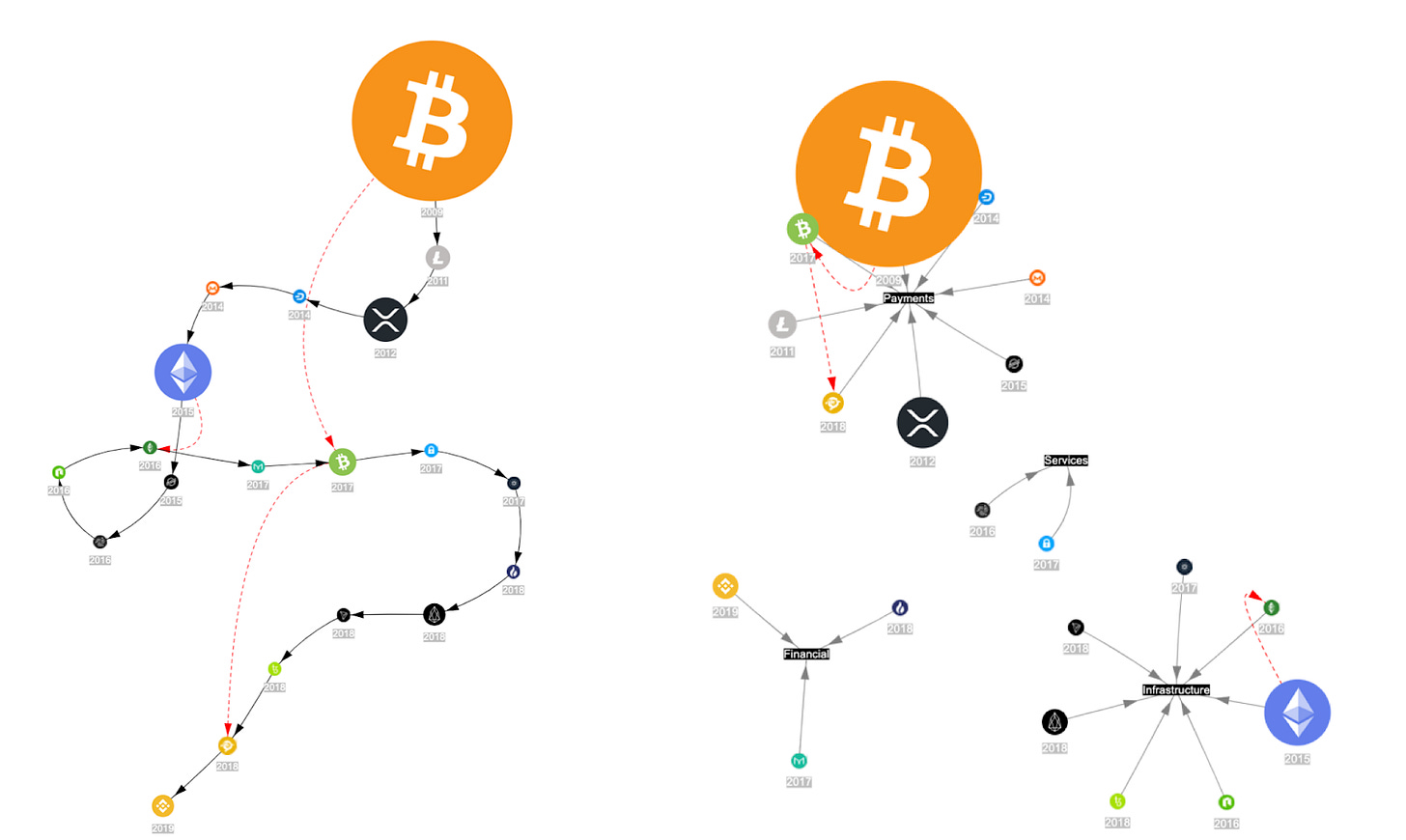Takens Theorem: The Anonymous Coder Creating Data Visualization Tools For The NFT Ecosystem and Much More.
Q&A with Takens Theorem

I decided to switch it up a bit today and instead of doing a podcast, I thought a written Q&A with Takens Theorem would be fun. Hope you enjoy!
Takens Theorem is an anonymous coder and easily one of the most impressive people in the crypto/non-fungible token (NFT) space. I “met” him via the Ethereum-based virtual world Cryptovoxels, after he built the first tool to showcase NFTs in-world. It was only after I started following him on Twitter when I realized how incredible his work is. He has created a series of tools that allows people to dive into the data of different crypto and NFT projects. The tools are completely free and easy to use, even people without a technical bone in their body (me!) can utilize them effortlessly. His goal is to create tools to help people, new to the ecosystem, learn about different projects and their features. A noble objective for an exceedingly talented individual. Please enjoy my Q&A with Takens Theorem.
Takens Theorem’s Website - https://takenstheorem.now.sh/
Takens Theorem’s Twitter (follow him to stay updated on all of his tools) - https://twitter.com/takenstheorem
Tell me about your background and how you got started in crypto and involved with NFTs.
I’m a noob. For years I skimmed the odd mainstream news item on Bitcoin, but never jumped in. In mid-2018 I was desperately seeking some quiet time on a visit to my in-laws. While out and about with them, I saw some young whippersnapper with a t-shirt that said “Blockchain” on it. I remember sighing to myself and thinking “alright, fine, I’ll read about it in some private phone moments.” By the time that 2018 trip was done, I was hooked.
I’m surprised Bitcoin and other projects hadn’t drawn me in earlier. My day job is somewhat technical. I’m a social scientist and wrangle data all the time. I code up interfaces and often work with databases of various kinds. Anyway, that’s my magical “getting into the space” story. In-laws, t-shirt shills, and hiding away somewhere hunched over my phone. Pure romance.
What are your views on cryptocurrencies? (Bitcoin, Ethereum, etc.)
I’m a pluralist: I like a lot of projects. There’s still a “techno-financial hegemony” dominating crypto conversations. There is so much focus on technical infrastructure, finance, and relevant economic theory. But I prefer seeing crypto projects as products that generate consumer experiences. When I started playing with exchanges and buying coins, I’d quickly bounce coins back and forth across various wallets to feel them out. It was fun. Funny money for our 21st-century brains – almost immediate transfer across growing wallet options and apportioned as you like (i.e., fractionally), and so on. Ethereum, in particular, struck me as exciting. ETH drew me in most, because of the web3 functionalities and the excitement of NFTs and decentralized applications.
What do you look for in an NFT project? Which NFT communities or projects are you involved in?
The most important feature, I think, is user or consumer fundamentals – the entire user experience driving a project. Is there a plan to draw users in and engage them and make a platform fun and interesting? At first, I’d jump into MetaMask and, if possible, play in the Dapps that had NFTs associated with them. I especially love OpenSea as a platform for wandering projects. I generally prefer projects that have something I can do. Art NFTs are great, and there is value in pure ownership. But for other NFTs, I wanted action.
My favorite right away was Cryptovoxels. It had a functioning product that was simple but slick. Features were being added all the time. Owning a parcel on Cryptovoxels wasn’t just a “techno-financial” hypothetical. It was a game. I could jump in and play it and see value. I started on Cryptovoxels shortly after it was birthed in 2018, and still own on it.
The Cryptovoxels community grew quickly. It grew not because of the “techno-financials,” but because of the use cases that quickly emerged. Art, for example, is now a flourishing feature of Cryptovoxels. I myself coded up a suite of tools (called “cv-nexus”) for Cryptovoxels, bridging its interface with standard web objects (e.g., pop-ups, menus, video, etc.). By mid-2019, Cryptovoxels had accumulated enough new features that it made my project obsolete so I retired it.
I still love Cryptovoxels and own and follow along casually.
Decentraland is now making great progress in achieving this kind of user experience too. Unlock’s subscriptions (e.g., Forbes Crypto) are NFTs with a slick user experience to get ad-free access. ENS is a brilliant application of ERC721 too and has great features.
Though techno-financials give crypto a sound theoretical basis, ultimately mass adoption depends on products that quickly give users new, valued experiences.
What motivates you to build tools?
I enjoy programming and trying to work within a set of constraints. Cryptovoxels is very fun for this reason. I’d go into the JS console in Chrome and wrangle its objects. Some other coders and I had full voxel model animation going as a coded add-on. So solving these technical problems is fun.
Lately, I’ve been excited about the data generated by the space. Public blockchains are so auditable, and many resources have been created to share data about them. Messari has an amazing free API, OpenSea’s API is fantastic, Coin Metrics has a great API, especially for network statistics on various coins. So I started to build tools about understanding and visualizing behavior in the space. Again, not necessarily as “techno-financial” fundamentals, but instead as kinds of products with different features. So now I’ve built a dozen or so interfaces that are sort of “educational” interactive tools to learn more. I’ve found them useful myself just to understand the relationship among various projects.
Can you share some examples of tools?
Messari Crypto’s API includes a large amount of elegant meta-data about crypto projects. So I made a kind of “visual screener” that utilizes network diagrams. The screener is more interactive and visually rich compared to your average stock screener – sortable tables and so on. This interface begins with a visualization of the history of crypto. But you can choose different graphing options to look at consensus protocols, main application (e.g., payments), issuance policies, etc. A user can load it up in their browser and click around and get a quick bird’s-eye view of all these features. “The space.”

https://visualscreener.takenstheorem.now.sh/
In the NFT realm, I created a 3D visual screener that lets the user plot and explore different NFTs and Dapps and so on by rotating, zooming in, hovering and clicking and so on. I pull in data from the OpenSea API, and plot Dapps/NFTs along three dimensions: number of owners, 7-day volume change, and 7-day volume. The plot also fuses font size and color as another set of dimensions. The user quickly sees the scale of projects and ownership on it, how active it’s been lately, etc., all relative to dozens of other projects in the same diagram.

https://nftscreener.takenstheorem.now.sh
I also made a couple of tools to explore ENS registrations, again using OpenSea’s API for NFTs. The user can see ownership distribution, recent registrations, etc. I recently showed in an analysis of these data that you can predict NFT value from a set of features pulled from the API.

https://ensplots.takenstheorem.now.sh/
I shamelessly created a Gods Unchained screener for recent card sales, and ranking cards by their “market cap,” and so on. This was fun, because it was exciting to see Gods Unchained grow so quickly, especially in sales activity on OpenSea.

https://zeusalytics.takenstheorem.now.sh/
So my strategy in tool building here is to fuse variables along many visual dimensions so users can get a sense of the space quickly. Traditional tables are useful. Richer visualizations supplement and help round out our understanding.
What is something you would like to see happen or something you think needs to happen to the NFT ecosystem?
I’d love to see more cross-project integration. Consider Cryptovoxels again. In that VR world, you can present your NFTs to users who visit your parcels. You can even create a kind of shop experience (Decentraland is setting this up, too). CryptoKitties often has releases that relate to or overlap with other projects. The best kind of integration is functional: Can I use one NFT in another project somehow? Can ownership in one domain facilitate my experience in another? More of this would be great.
It is widely known that we also need to grow the user base of Dapps and NFTs. This is critical. I had a thread on Twitter two months ago summarizing some of this issue using data from Dapp Radar. In sum, the user base for many Dapps and related NFTs is bleak.
Integration of Dapps and NFTs may help this. When a user buys an NFT in one domain, their experience currently is mostly determined by that one project. But projects are often relatively small or still growing (and, sadly, in some cases, not yet released). By expanding user experience integrating NFTs across projects it creates more value for the user. Because of this, it may diversify the kind of audience that would take interest, because users can now blend the use of the Dapps in more flexible ways. To facilitate this, it may be handy to codify meta-data that travels with an NFT.
Finally: What’s with the pseudonym “Takens Theorem”?
Yeah, the name is cheesy. I like anonymity. The name relates to my day job. In my field, I study the dynamics of systems. Takens’s theorem is my favorite idea in this domain. The theorem is also a kind of symbolic statement about the power of data. Takens’s theorem is about how we recover the underlying dynamics of complex systems from surprisingly simple measurements of their behavior. The theorem’s power can be stated succinctly: Even simple and noisy data can, under the right conditions, reconstruct the system from which that data was generated. Anyway, I like that idea, so I decided to adopt the pseudonym from it.

If you liked this content please subscribe to my newsletter, Zima Red, and give me a follow on Twitter. Stay tuned for more articles on unique digital assets and all things virtual. 😎
